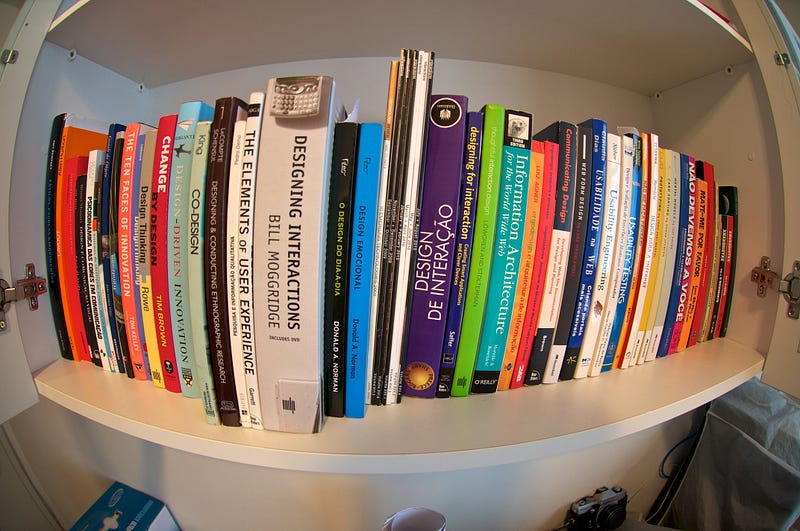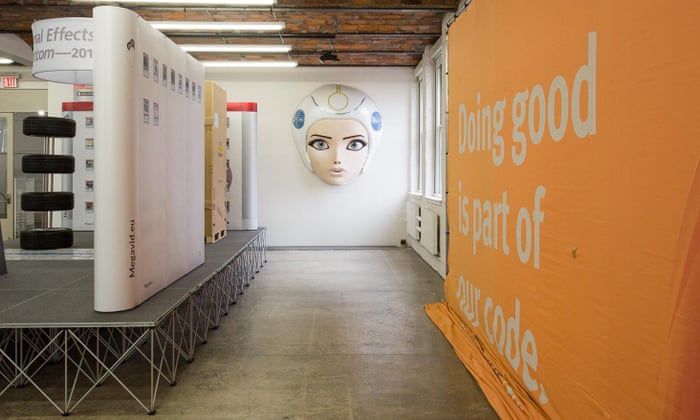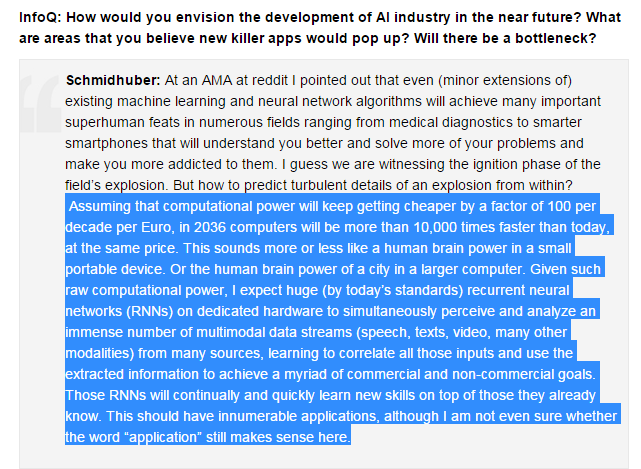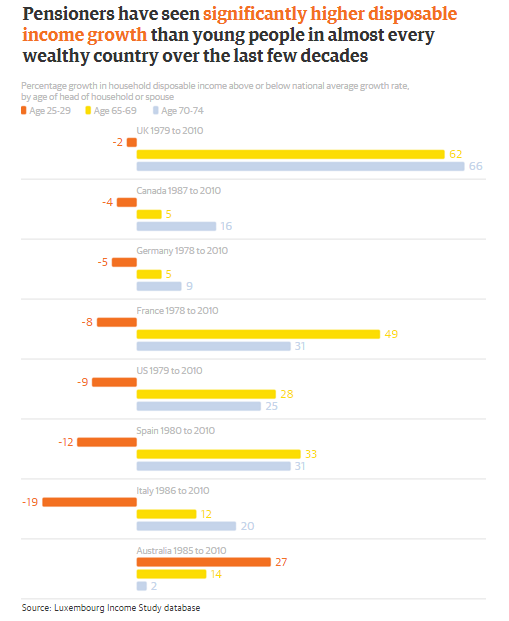Sections
AlphaGo
[avatar user=”malm” size=”small” align=”left” link=”file” /]
There was rare unanimity across the tech world following AlphaGo’s 4-1 victory over Lee Sedol. Pretty much everyone agreed it was a major milestone in the development of Artificial Intelligence and would “change the world”. AlphaGo creators DeepMind released this video a month ago attempting to explain how it works:
Perhaps the most remarkable aspect of the victory is that it wasn’t broadly anticipated and happened so fast. As little as a year ago, most involved in the field thought it would take a least a decade for an AI to reach world championship level:
[AlphaGo] taught itself how to go from an amateur player to world champion in less than a year. AI methods are progressing much faster than expected, (which) makes the question of the long-term outcome more urgent. … That means that the long held fantasy of a true form of general artificial intelligence is going to be upon humanity sooner than we thought.
Post AlphaGo’s triumph, concerns around the direction of travel of AI technology, which were brilliantly pulled together by Tim Urban last year, suddenly feel more urgent than ever. The territory is re-examined in this Gizmodo post which tries to look beyond the hyperbole and hysteria to the wider implications for society as we move toward the Singularity when machine intelligence will surpass that of humans:
That fateful day when machines finally become smarter than humans has never appeared closer—yet we seem no closer in grasping the implications of this epochal event.
It’s hard to know what to believe. But thanks to the pioneering work of computational scientists, neuroscientists, and AI theorists, a clearer picture is starting to emerge.
We can argue about the date but it seems clear that technical developments are outpacing progress around governance and oversight. Wired’s inchoate sense of mourning mixed with wonder around Sedol’s loss to a machine and widespread celebration of his single consolation victory seem to reflect a recognition that the exponential is beginning to make its presence felt in such a way that nothing will be quite the same from here on for humans and machines. Not least for the large number of young Go prodigies being hothoused across Asia. Do they still have a future?
Still, there’s always be the last bastion of irrationality, Mornington Crescent:
Even if #alphago does win this series, there will always be the last redoubt of human games – Mornington Crescent. #ISIHAC
— Charles Arthur (@charlesarthur) March 10, 2016
And it will not be plain sailing for the machines. Reading between the lines, concerns around recent dramatic advances in humanoid robot coming across as ‘terrifying’ to many human observers were at least partly implicated in Google’s surprising decision to offload its Boston Dynamics robotics acquisition. The prosaic issue of how to monetise these developments in the near future was also a factor.
Somewhere inside Google, Larry Page is screaming "WTF IS THIS?!" https://t.co/1Y9nM6Quvt pic.twitter.com/apRpRsFGeR
— Niv Dror (@Nivo0o0) March 17, 2016
The robotic aspect to intelligence is not an incidental detail. There is an argument (the so-called ’embodiment principle’) that you cannot have true AI outside of a physical body meaning the two are utterly connected:
most researchers in AI now agree that intelligence and embodiment are tightly coupled issues. Every different body has a different form of intelligence, and you see that pretty clearly in the animal kingdom. It starts with simple things like making sense of your own body parts, and how you can control them to produce desired effects in the observed world around you, how you build your own notion of space, distance, color, etc.
The Singularity
- InfoQ have published an interview with Jurgen Schmidhuber co-founder of startup Nnaisense whose explicit mission is “to build large-scale neural network solutions for superhuman perception and intelligent automation, with the ultimate goal of marketing general-purpose Artificial Intelligences“. Schmidhuber and his team seem to have spent years working at the cutting edge of applied Deep Learning. He comes across as a deeply knowledgeable and amusing character offering the following answer to the question “What are your latest research interests regarding deep learning or artificial intelligence?“:
My latest research interests are still the ones I formulated in the early 1980s: “build an AI smarter than myself such that I can retire.”
- He’s clearly not personally worried about technological unemployment and paints a vivid and mostly positive picture of the proximate world of the Singularity around the mid 2030’s. That’s about when the likes of Ray Kurzweil suggest machine intelligence will surpass human intelligence but without really going into specific technical detail. At least with Schmidhuber’s description you get a clearer sense of the engineering journey from the ANIs like AlphaGo that we have today to a world infused with unfathomably more complex embedded neural networks working in concert:
- Autumn AI’s Leaf is the sort of incremental improvement that will get us there. It is an easy access development platform specifically targeted at “machine learning hackers” which claims to outperform tensorflow on a leading performance benchmark:
- The race to the Singularity will not just be about the development of machine intelligence alone. The Nautilus examine the prospects for superhuman intelligence without recourse to the artificial variety courtesy of genetic engineering. It’s a prospect that comes ever closer through ‘user-friendly’ gene-editing technologies and tools like CRISPR:
Each society will decide for itself where to draw the line on human genetic engineering, but we can expect a diversity of perspectives. Almost certainly, some countries will allow genetic engineering, thereby opening the door for global elites who can afford to travel for access to reproductive technology. As with most technologies, the rich and powerful will be the first beneficiaries.
- A Horizon episode broadcast this week and provocatively entitled “The Immortalist” looked at efforts to “upload a human brain to the cloud.” It’s controversial territory and given the ’embodiment principle’ it is unclear whether it will ever be truly possible to instantiate a functioning brain (let alone consciousness) in a non-organic medium outside the body it is inextricably a part of. But one suspects many will continue trying. Expect to hear a lot more reference to the term ‘connectome‘ to describe the complete neural wiring map of a brain in the coming years. And the introduction into mainstream culture of ‘consciousness embodiment’ which is curiously close to the religious concept of transmigration of souls:
“For the next few centuries I envision having multiple bodies, one somewhere in space, another hologram-like, my consciousness just moving from one to another.”
- Other evidence of Singularity references reaching mainstream culture include an eponymous New Order single which starts off with a Joy Division opening and ends up reprising their 80’s dance pomp. The opening verse paints a somewhat darker and more resigned backdrop to the rapidly approaching new order the Singularity represents:
Winter came so soon
And summer never happened
We’re players on a stage
With roles already scripted
We’re working for a wage
We’re living for today
On a giant piece of dirt
Spinning in the universe
And Donald Trump
- It’s not entirely clear where Donald Trump stands on Artificial Intelligence or technological unemployment. His stance is likely to be guarded given much of his core blue collar mid-American support base likely see robots as a threat, albeit perhaps in their minds a distant one, to their livelihoods. Which leads to the bizarre thought that concern over the pace of robotic automation may actually be contributory factor in his success. DeepDrumpf might not be though. It’s an AI Trump tweetbot that’s been gathering momentum for weeks for its uncanny similarity to the real thing:
“I’m a Neural Network trained on Donald Trump transcripts. (Priming text in [ ]s).”
- Does this tweet pass the Turing test?
[The media? ]What they do is a disgrace. They will never make America great again. We need a truly great leader now. Nuclear weapons and me.
— DeepDrumpf (@DeepDrumpf) March 12, 2016
- Trump however is no joke. His continued success is beginning to wreak havoc from psychotherapists reporting patients exhibiting signs of ‘Trump Anxiety’ to fears of further protests descending into violence post Chicago, it seems a collective trauma is being inflicted on the nation and it doesn’t seem like it’s going to end well whatever happens:
To many members of minority groups, the sight of Trump and Trumpism atop a national ticket would represent a grievous insult to their dignity, and a potential threat to their well-being; to many moderates, liberals, and leftists of all backgrounds, it would represent a moral outrage. The anti-Trump forces won’t stand back and let him parade around the country unopposed. They will exercise their democratic right to protest against him and what he represents, and some of them will be disruptive. Which, doubtless, will provoke more anger from Trump and his supporters.
- Maybe Trump will set up a volunteer militia to ‘protect’ his rallies. And give them a smart uniform to wear. He’s already hinted at ‘riots’ if he doesn’t get his nomination. In the light of this grim backdrop it is vital to recognise that for all the bitterness of his detractors, Trump commands huge support in America which has propelled him to the threshold of nomination. Some of the logic to explain his appeal was laid out in the commentary last week. However, Scott Adams, creator of Dilbert, has long been offering an intriguing alternative explanation based on human psychology and irrationality. Adams is pretty upfront on where he stands:
Donald Trump is a con man. He’s also a fraud, a liar, a snake-oil salesman, and a carnival barker. Clearly he is running a scam on the country.
- But he’s also clear that a detail like that is not going to get in the way of his being elected because Trump is operating beyond the world of rationality, logic or facts and is instead directly channelling the emotions of his core constituency:
We all understand that a president has to be the leader of dumb people as well as smart people – and there are far more dumb people. So how does one kind of message get through to two totally different types of voters? Trump’s solution, so far, is to influence the dumb people via emotion while winking to the smart people so we know he is smart and not crazy. The wink is what tells you he probably isn’t Hitler. The wink says he is doing what he needs to do to get elected.
- And openly dismissive of the value of informed external advice in world affairs, apparently trusting his own instincts:
in an interview on MSNBC’s “Morning Joe” program, Mr. Trump described himself as the person he listens to most on foreign policy. “I’m speaking with myself, number one, because I have a very good brain and I’ve said a lot of things.”
- Adams has a self-confessed low opinion of human rationality, believing we are mostly little better than “moist robots” that can be easily influenced by a skilled Master Persuader like Trump who he suggests will win the Presidential campaign “by a landslide” in November. It seems highly implausible that Trump can sustain the conning that long without being found out or imploding but then again, plenty of “experts” dismissed his chances of winning the GOP nomination as little as six months ago. One thing is clear. Anyone trying to build an AI equivalent to Donald Trump capable of milking human emotion and irrationality would have their work cut out.
- TechInsider on how the integration of RankBrain machine learning within Google’s core search engine has transformed the smartness of its search responses.
- Google have published a research paper outlining their success in using Deep Learning to train robot arms how to grasp objects. Specifically in this case a multi-layer Convolutional Neural Network (CNN). It’s a good illustration of the general applicability of these sort of methods to a wide range of problems and helps underline why machine learning is foundational to everything they are doing. It’s unclear if Google’s tensorflow library was used to support the work:
- This post compares Google and Amazon’s cloud offering side by side is well worth reading. The author suggests that Google’s Cloud Platform GCP has raised its game to such an extent it now represents a potent challenge to Amazon who remain the overwhelmingly dominant player in the public cloud marketplace. The graphic charting the collapsing price of a single core cloud instance over the last 8 years is very revealing:
Though it has fewer users and services than AWS, we realized that bread and butter platform technology / performance is more important and we felt more confident in Google’s core compute instance, networking, and disk technology. As a bonus: GCP’s pricing is strictly better than AWS.

- Android N will be the next major letter release of the platform. The Verge take a walk through its key features. One which will come as relief to anyone that has a lot of apps and regularly performs device software updates is the apparent removal of the annoying “optimizing apps” post-update step.
- Business Insider published an article looking at the history and possible future of its smartwatch efforts. It includes a profile of David Singleton, Director of Android Wear. A couple of interesting revelations that emerge from the conversation are that as much as 25% of the team behind Android Wear is based in the UK and that far from being a gimmick Google claim to have a “50 year” perspective on watch computing:
Google has the vision: A wrist-mounted remote control that keeps you healthy, feeds you information, and controls the internet-connected world around you.

Apps and Services
- A journalist reflects on how Facebook is “eating the world”:
Social media hasn’t just swallowed journalism, it has swallowed everything. It has swallowed political campaigns, banking systems, personal histories, the leisure industry, retail, even government and security. The phone in our pocket is our portal to the world. I think in many ways this heralds enormously exciting opportunities for education, information, and connection, but it brings with it a host of contingent existential risks.
- Ted Livingston of Kik on the future of chat messaging suggests that real-time interaction is crucial and software bots will be the key enabler:
Chat apps will come to be thought of as the new browsers; bots will be the new websites. This is the beginning of a new internet.
- One of the cofounders of messaging middleware outfit Layer goes further, suggesting each message itself has the potential to become an application launchpad of its own:
Each message has the potential to be a mini application. It might be just an application that displays text, a photo, or alternatively presents an interface for something more complex in the constrained environment of a message cell. There is an unlimited set of opportunities to create bite size applications like a photo carousel, media players, mini games, inventory items, in-messaging payments, and many others.
- Here’s an example – actionable messaging cards within Operator:

- ArsTechnica have been using Slack a while so are in a position to gauge “what it is doing to our offices and minds” which is explored in this long and refreshingly balanced post on the site. It’s well worth reading if this interface is all to familiar to you:

- The first comment on Hacker News years ago when Dropbox was announced entirely missed the point that the service offered many users great utility by slickly choreographing all the messiness of cloud storage irrespective of perceived technical merit. Stumbled upon this week, it remains a great illustration of why it pays to be aware of your own Availability Heuristic:
- Forbes contrast the fortunes of Amazon’s Echo which has been a huge success by all accounts and Sonos who are having to announce layoffs. The Alexa platform which powers the Echo is a key enabler for what is arguably “the first product to really showcase the power of voice control in the home”:
“outside of playing music, the device has become an increasingly popular means of controlling the growing array of smart home gadgets.”
Design
- Really handy “complete list of UX resources and tools“ includes a reference to the indispensable Steve Krug classic “Don’t Make Me Think”.

Mobile and Devices
- Longreads special on the dark secret behind the mobile phone in your pocket is a grim but essential read. It’s an excerpt from a recent book called “Blood and Earth” which explores the connection between modern day slavery, ecological destruction and consumer goods, particularly the rare earth metals and other materials required to manufacture mobile phones such as copper, gold, palladium, and platinum:
just as each of us is deeper than our surface, just as each of us has a story to tell, so do the tools and toys and food and rings and phones that tie us together. Slaves are producing many of the things we buy, and in the process they are forced to destroy our shared environment, increase global warming, and wipe out protected species.
- Foxconn’s efforts to quietly build its own smartphone brand called InFocus were highlighted in this blog over a year ago. You can get a 5.2 inch 64-bit Octocore Android 5.1 InFocus phone for under £80 on TinyDeal while stocks last for another 10 hours.
- The Atlantic explains how fingerprint data printed out from a customised sub-$500 inkjet unit can fool leading smartphone fingerprint sensors.
“We ran dynamic and behavioural analysis (on the pairing app) and discovered that when it was paired, it started communicating outbound over a random IP address to China,”
- “I stayed in a hotel with Android lightswitches and it was just as bad as you’d imagine” is yet another IoT security shocker. The author’s suggestion that “We’re doomed” makes sense once you’ve read the post.
Work and Startups
- “We hire the best. Just like everybody else“. Jeff Atwood on the logical absurdity of only hiring exceptional staff and the consequences of ignoring the pernicious influence of hidden bias:
If your hiring attitude is that it’s better to be possibly wrong a hundred times so you can be absolutely right one time, you’re going to be primed to throw away a lot of candidates on pretty thin evidence.
- Atwood reminds us that the main reasons why startups fail are that they are building the wrong product or plain just run out of money. It’s not for want of having 10x staffers.

- Product Hunt is hot right now but it took them 6 years to become an overnight success.
- Amazon is hiring the most MBAs in tech apparently. It will be interesting to see if and how that translates to ongoing business performance improvement.
Society and Culture
- The Guardian highlighted the “financial rout facing millennials” with a stark analysis looking at the glaring disparity in disposable income growth between the generations over the last 35 years:
A combination of debt, joblessness, globalisation, demographics and rising house prices is depressing the incomes and prospects of millions of young people across the developed world, resulting in unprecedented inequality between generations. … A Guardian investigation into the prospects of millennials – those born between 1980 and the mid-90s, and often otherwise known as Generation Y – has found they are increasingly being cut out of the wealth generated in western societies.
- And yet at the same time there’s a curious sense of a lack of rebellion among the age group most affected. The Guardian also asked this week “Where have all the punks gone?“. One respondent suggested an answer that echoed David Bowie’s comments to Jeremy Paxman who was in many senses in later years a living embodiment of this worldview:
The internet hasn’t only changed our lives and jobs, says Denny, it has also changed the very definition of an artist. “A few years ago,” he says, “if you were a creatively minded person, you might have become a sculptor or a painter. Now you are equally likely to become the founder of a tech startup, channelling your creative ideas and risk into what is, ultimately, a business.”







